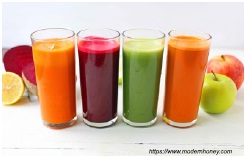Feb.19: FOOD AND HEALTH
- Posted by CERC India
- Posted in FEBRUARY
Can vegetables make you gain weight?
All vegetables cannot be considered free foods when you are on a weight-loss diet
Vegetables contain a host of nutrients – vitamins, minerals and antioxidants – that boost the immune system preventing diseases. Most vegetables are low in fat and calories and high in fibre. Eating plenty of vegetables also increases satiety with fewer calories, and reduces the craving for starchy and fatty foods. In fact, nutritionists recommend five servings of vegetables daily.
Vegetables, eaten raw in salads, or prepared the healthy way, are considered free foods if you are on a weight-loss diet. However, this may surprise you, there are certain vegetables that make you gain weight, even if they are prepared the healthy way!
According to a study by the Harvard T.H. Chan School of Public Health published in the journal PLOS Medicine, potatoes, peas and sweet corn are the worst offenders. Imagine, you could eat six times more spinach to provide you with the same amount of calories provided by sweet corn!Â
High GI
Potatoes, peas and sweet corn are carbohydrate-rich, high glycemic index vegetables. The glycemic index (GI) is a measure of how quickly and how high a particular food can raise your blood sugar level. Foods with high GI raise blood sugar levels quickly making you feel hungry sooner. When blood sugar levels spike, it also leads to a metabolic response that can stimulate fat storage and weight gain.
Potatoes, peas and sweet corn are popular vegetables, especially among children. They have nutritional value – they contain potassium, vitamin C, vitamin B6, iron, fibre, and protein. So, it is advisable to consume them, but in limited quantities. Other starchy vegetables to be consumed in small quantities are sweet potato and yam.
Sugar contentÂ
Carrot and beetroot are high in sugar content and excess consumption can lead to weight gain. Apart from adding to the calories, sugar unbalances hormones insulin and cortisol which signals your body to store calories as fat. As for avocados,they are best avoided if you are trying to lose weight. They are technically a fruit, but make a creamy and delicious addition to any meal. However, they are very high in calories – a large avocado contains a whopping 332 calories!
To lose weight, eat more non-starchy vegetables – which are higher in fibre and lower in carbohydrates – such as string beans, green leafy vegetables such as spinach, brinjal, broccoli, cauliflower, capsicum, cucumber and tomato. Cabbage and onions can be consumed in moderate quantities.
Smoothies and juices
As for vegetable smoothies, even though the ingredients are healthy, they are a concentrated source of calories that the body fails to register it has consumed. That’s because liquids don’t register in the brain the same way solids do. According to research published in the Journal Physiology and Behavior, the act of chewing stimulates gut hormones that impact appetite and satiety.
Juices being liquids are less satiating than solids as explained above. Store-bought vegetable juices contain way too much salt and sugar. Also, by drinking juices you are missing out on much of the fibre that vegetables contain.
Keep salads healthyÂ
Here are a few dos and don’ts to keep your salad healthy:
- Include fruits like apples, figs and berries to add colour and flavour. Avoid dried fruit as they are high in sugar.
- Mix in a small amount of nuts to make the salad crunchy. Don’t overdo it as nuts are a high-calorie food.
- Avoid cheese and croutons.
- Go for a low-fat dressing: A little fat is necessary as it will help you better absorb the fat-soluble vitamins and antioxidants in the salad. You can use olive oil (small quantity) and lemon juice, or olive oil and vinegar for a dressing.
- Experiment with a variety of flavourful vinegars for the dressing.
- Include vegetables in a variety of colours to make the salad more interesting and healthy.
- Don’t add pasta or beans and chickpeas to the salad if you want to keep it low-calorie.
The next time you are buying vegetables at a local supermarket, pick your vegetables with care. Apart from buying starchy vegetables in small quantities, choose a mixture of colours to ensure a good mix of nutrients.
Sources: www.rd.com, www.eatthis.com, www.msn.com, BBC, www.forbes.com





